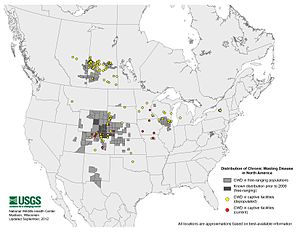 |
Big rivers, many lakes and wetlands make Missouri especially attractive to bald eagles.
JEFFERSON CITY, Mo. -- Because of its big rivers, many lakes and wetlands, Missouri is one of the leading lower 48 states for bald eagle viewing. Each fall, thousands of these great birds migrate south from their nesting range in Canada and the Great Lakes states to hunt in the Show-Me State. Eagles take up residence wherever they find open water and plentiful food. More than 2,000 bald eagles are typically reported in Missouri during winter.
From December through February, Missouri's winter eagle watching is spectacular. Discover nature with Missouri Department of Conservation’s (MDC) Eagle Days events around the state, or enjoy eagle-viewing on your own. Eagle Days events include live captive-eagle programs, exhibits, activities, videos and guides with spotting scopes. Be sure to dress for winter weather and don’t forget cameras and binoculars. Watch for eagles perched in large trees along the water’s edge. View them early in the morning to see eagles flying and fishing.
Eagle Days events:
• Dec. 1-2 at Squaw Creek National Wildlife Refuge south of Mound City (816-271-3100)
• Jan. 5-6 at Smithville Lake north of Kansas City (816-532-0174)
• Jan. 26-27 at Lock & Dam 24 at Clarksville (660-785-2420)
• Jan. 26-27 at MDC Springfield Conservation Nature Center (417-888-4237)
• Feb. 2 at Mingo National Wildlife Refuge northwest of Puxico (573-222-3589)
Other places for winter eagle viewing:
• Lake of the Ozarks at Bagnell Dam Access east of Bagnell
• Eagle Bluffs Conservation Area on Route K southwest of Columbia
• Lock & Dam 25 east of Winfield
• Old Chain of Rocks Bridge south of I-270 off of Riverview Drive in St. Louis
• Riverlands Environmental Demonstration Area east of West Alton
• Schell-Osage Conservation Area north of El Dorado Springs
• Swan Lake National Wildlife Refuge south of Sumner
• Table Rock Lake and Shepherd of the Hills Fish Hatchery southwest of Branson
• Truman Reservoir west of Warsaw















